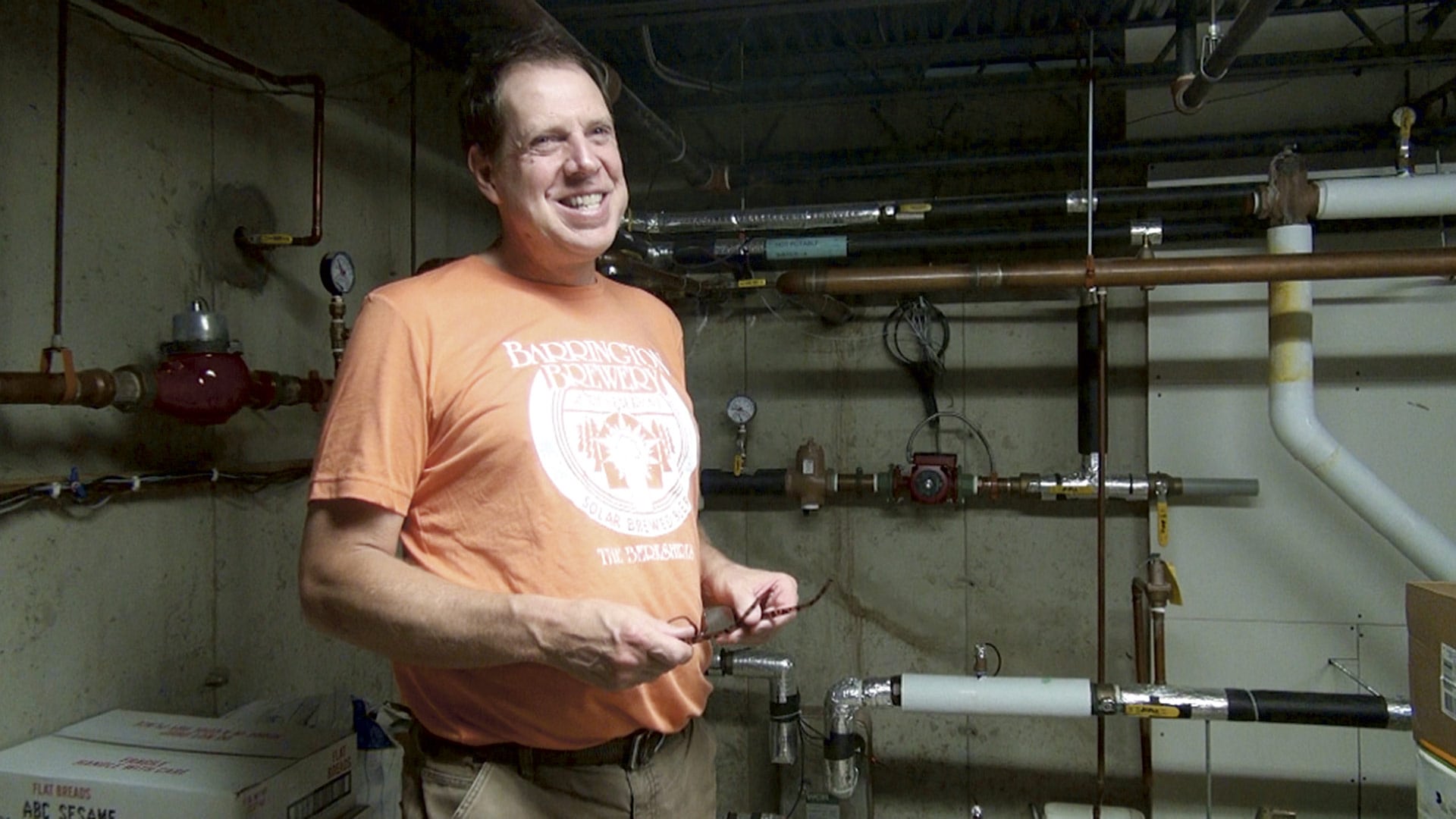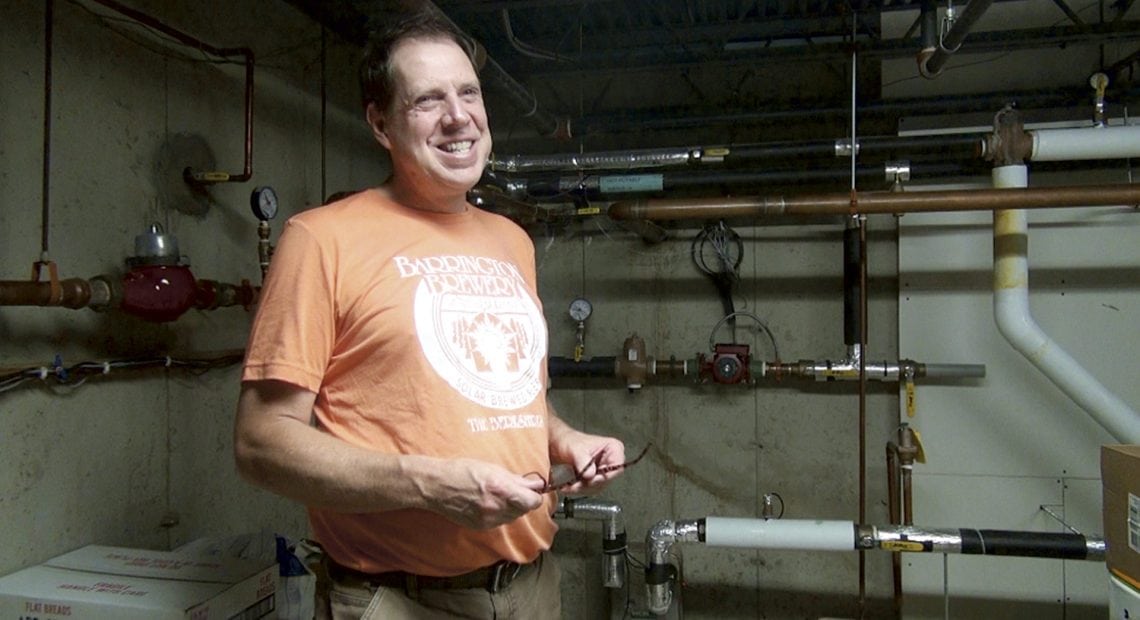A Hot Topic
 The Center for EcoTechnology has carved out a significant legacy over the past four-plus decades by promoting green energy, waste reduction, and a host of other environmentally friendly initiatives — partly because it effectively conveys how such practices are good for not just the planet, but the bottom line. Two new solar-access projects — one for homeowners, one for businesses that use a lot of hot water — are no exception.
The Center for EcoTechnology has carved out a significant legacy over the past four-plus decades by promoting green energy, waste reduction, and a host of other environmentally friendly initiatives — partly because it effectively conveys how such practices are good for not just the planet, but the bottom line. Two new solar-access projects — one for homeowners, one for businesses that use a lot of hot water — are no exception.
After decades of connecting businesses and homeowners with renewable-energy solutions, the Center for EcoTechnology in Florence keeps coming up with new ones.
Take, for example, a solar-access program specifically for middle-income homeowners, making it possible for qualifying families to procure solar panels and heat pumps with no upfront costs.
“A lot of middle-income homeowners have not been able to take advantage of owning their own solar arrays,” CET President John Majercak said. “They can make a fixed payment for electricity to somebody who owns the equipment, but there are many more benefits to owning the panels.”
To introduce more households to those benefits, CET has worked with UMassFive College Federal Credit Union on a loan product that not only makes it easier to purchase solar panels — CET actually makes the first six payments on the 10-year loan — but includes a warranty on all equipment and labor for the life of the loan.
“This product makes it possible for a homeowner to own the solar panels and heat pumps,” he explained. “We set it up to make sure what they pay on the loan is less than what they’re paying now for heating and cooling, so they see immediate savings, and after 10 years, they own the system outright, so the heating and cooling, when powered by solar panels, is essentially free after that.”
Then there’s a new program that works with businesses that use a lot of hot water — think breweries, hospitals, laundromats, and many others — and connects them with incentives for solar hot water.

Andrew Mankin (pictured) and Gary Happ recently had a solar hot-water system installed at their business, Barrington Brewery.
“That’s a program available to any business or farm in the state — including multi-family buildings and nursing homes — that use a lot of hot water year-round. It’s a great technology where we use solar panels to heat water, as opposed to make electricity,” Majercak explained. “For folks who use a lot of hot water in their business, it’s a really economic way to make hot water. It’s technology not a lot of people know about, compared to solar panels that make electricity. So we’re doing a lot of outreach and hand-holding, getting businesses to look at the proposals, the free technical assistance, and the incentives available from the state.”
In both cases, CET partners with state agencies like the Department of Energy Resources (DOER) and the Massachusetts Clean Energy Center (MassCEC) to bring the economic and environmental benefits of solar energy to customers who might not have considered them before.
“If we can help someone’s life be better or their business perform better at the same time we’re helping the environment, it just makes so much sense,” he said. “So we’re always pushing harder to make more of it happen.”
Home and Business
In the case of solar hot water for businesses, CET provides solar hot-water installers to get the project done, information on grants and rebates to help cover costs, and step-by-step guidance through the whole process, Majercak said, adding that other businesses that might benefit include hotels and restaurants, car washes, and community centers and resorts with large indoor swimming pools — any business, really, with year-round use of heated water in large quantities.
A solar hot-water system essentially captures heat from sunlight and circulates the thermal energy to a water tank. Solar hot-water systems reduce reliance on traditional water-heating fuels, such as oil, electricity, or propane, saving consumers money on their energy bills. These systems can provide up to 80% of domestic hot-water needs. Incentives of up to $100,000 are available for qualifying projects, Majercak said.
“The technology has been around for a long time — for decades, really — but it’s improved over the past five to 10 years, and word hasn’t really gotten out how effective it is,” he noted. “We’ve helped a variety of different businesses and been very successful saving them a ton of money — things like a multi-family building that has central hot water, or a farm that has a cheese-making factory on the side. It doesn’t cost anything to have us come out and do an assessment and see if it would be a good match for you.”

John Majercak presents information about CET’s impact during the organization’s annual meeting.
Business owners Majercek has spoken with are often surprised at savings they didn’t know existed, he noted.
“There’s so much information out there, but people don’t always think of their energy costs as something that’s controllable — they say, ‘oh, wow, it costs a lot of money to heat hot water, but what can I do?’ They think of it as the cost of doing business, rather than something they can improve on by using new technology.”
The same is true in the residential market, to some degree, he said, but to those who have signed on, the benefits are evident, including, again, step-by-step guidance through the program from CET, the 10-year warranty on equipment and labor, and a reduction in energy costs right from the start along with increased home value — not to mention a 30% federal tax credit and a 10% tax credit from the Commonwealth for solar installation.
While most homeowners know what solar panels do — convert sunlight into electricity to power a house without any pollution or carbon emissions — heat pumps aren’t as commonly understood, Majercek said.
Rather than burning fossil fuels to produce heating and cooling, heat pumps move heat from one place to another — bringing heat into the home in the winter and removing heat in the summer. Advancements in the technology now allow for excellent performance even on the coldest and hottest days of the year.
“This is a great new program,” he told BusinessWest. “The state specifically targeted middle-income homeowners, helping them get financial help and hands-on assistance from us to take advantage of these two technologies — solar photovoltaic panels and heat pumps, which are becoming much more commonplace.”
Even so, he said, many homeowners have been reluctant to pay the up-front costs for energy-efficient technology, which is why the loan product CET is using — ensuring that their costs don’t rise from what they’re already paying — is so attractive.
Some of those who believe in solar power but fear the initial costs sign onto power-purchase agreements with solar-panel owners, he added, “and that’s OK, but they don’t get the benefits of ownership — the tax credits, the renewable-energy credits. They’re missing out on one of the best parts. This program helps them take advantage of that, and it’s affordable for them right from the start.”
A Green Legacy
Connecting individuals and businesses with green energy solutions is a large part of CET’s mission, but that mission has taken many forms since the organization’s mid-’70s inception.
At first, CET focused on energy conservation, in particular partnering with utility companies on the relatively new concept of ‘energy audits,’ whereby a consultant visits a home or business to talk about ways in which their building or operation could be revamped to save on energy costs.
Other early initiatives included the development of a passive solar greenhouse at Berkshire Botanical Garden and Project SUEDE, a program that taught solar energy, energy-conservation theory, and carpentry to unemployed people, who then installed 31 solar space-heating systems in low-income households.
CET still conducts energy audits, helping homeowners and businesses understand the value of sustainable systems and educating them on the incentives available to make changes. But the organization has become much more, expanding its mission into a host of new opportunities, from composting to food-waste reduction.

Paulina Alenkina, a CET employee, says she’s glad she took advantage of the solar-access program.
Through a program called RecyclingWorks in Massachusetts, CET offers technical advice and assistance to companies regarding recycling and composting waste. In doing so, it has worked with companies ranging from small shops to large entities like Big Y and Titeflex.
Another success story at CET has been EcoBuilding Bargains, which began life as the ReStore in 2001 before undergoing a move and rebranding seven years ago.
In its first incarnation on Albany Street in Springfield, the ReStore dealt in recycled building materials, with the twin goals of saving builders and do-it-yourselfers money while reducing the burden on landfills. A move to Warwick Street in 2011 involved a $900,000 energy retrofit on the existing building on that site — a good example of CET practicing what it preached.
CET is also making an effort to raise up the next generation of green innovators, through a fellowship program it launched seven years ago. Five fellows per year — recent college graduates from across the U.S. — are chosen to work with CET for one year and receive training in environmental science, energy efficiency, waste reduction, and other aspects of green business. They’ve gone on to work at similarly minded nonprofits, and also corporations looking to go green.
Meanwhile, with utility incentives making energy-efficient technology more affordable for Massachusetts businesses, the Center for EcoTechnology continues to works with Columbia Gas and Berkshire Gas to help companies navigate the incentives and options available.
“The state has goals for how much renewable energy it wants to create, and it wants to address climate change and access all the benefits these technologies and services provide,” Majercek said. “Those goals align closely with our mission. We’re trying to bridge the gap between what we’d like to happen and what’s actually happening in the world.
“If we can come in and provide some education and hand-holding to make it simple for people,” he went on, “the technology can ensure that people get benefits, and the environment gets benefits, too. We’re helping people be more comfortable and save money — and saving the planet. It’s a triple bottom line.”
All Aboard
Businesses can also boost the new solar-access program for middle-income homeowners simply by letting their employees know it exists, he added. “Many businesses have lots of employees that fall into the middle-income bracket and would be able to benefit from the program. We can provide information for companies: newsletters, posters, lunch-and-learn presentations for employees and staff. Businesses can help employees go green and save money; it’s an easy thing to promote, and a win for any employee who would qualify.”
Such initiatives have been a win for CET as well, which not only reached but surpassed its program goals in the most recent three-year period.
“That’s exciting,” he said. “Everyone who works here is extremely motivated by our mission and the impact we can make.”
Joseph Bednar can be reached at [email protected]





